Jerome, a professional thief and drug addict who was no stranger to judges, cops, and attorneys, sat on a well-worn wooden bench outside a courtroom door. His attire for the day … an orange jumpsuit and handcuffs and ankle chains and white rubber shower shoes. The tile beneath his feet was scratched and dented and dull.
If those walls could talk
The wall behind Jerome was painted a mint green color and had a row of individual greasy head-shaped stains above each of the benches lining the hallway, stains left behind by the men and women who’d committed crimes ranging from petty theft to killing and butchering other humans.
Jerome was nervous and scared. He was also once a dear friend of mine.
Our bond began when we were teammates on our school football squad. We were the meanest and nastiest linebackers around and together we were practically unbeatable. In fact, it wasn’t unusual at all for an opposing team to go scoreless against us, and part of that success was due to Jerome’s and my (mostly Jerome) hard hits at the middle of the line, along with our regular sackings of quarterbacks.
Back in the day, Jerome was big and muscular and could run as fast as a frightened deer. He also carried a high GPA. The guy was smart, witty, and popular. He didn’t smoke, nor did he drink alcohol, and he was quite outspoken when it came to condemning drug use. He had hopes of getting out of the projects and attending the University of North Carolina, and possibly a career in the NFL. Drugs and alcohol were not a part of that picture.
In those days, our football days, my friend was a bit vain, though. He spent a lot of time grooming in front of mirrors, storefront windows, or any other reflective surface capable of returning his image.
He carried an Afro pick in his back pocket and frequently pulled it out to work on his hair, and he was forever mopping and rubbing and slopping gobs of lotion on his arms and face until his molasses-colored skin shone like new money. His perfectly-aligned teeth gleamed like the white keys on a showroom Steinway. And, for a big, beefy and manly guy, he smelled a bit like lavender garnished with a hint of coconut.
There in the courthouse, though, Jerome appeared weak and sickly. He was rail thin and his complexion was muddy. The whites of his once bright eyes were the color of rotting lemons; their rims, and the edges of his nostrils, were damp, just on the edge of leaking trails of tears and mucus.
His hands shook, and his teeth, the remaining ones, were spattered with black pits of rot and decay. His breath smelled like a week-old animal carcass. His fingernails were bitten to the quick and his hair was dry, uncombed, had bits of lint and jail-blanket fuzz scattered throughout, and it was flat on one side like he’d been asleep for days without changing positions. He smelled like the combination of old sweat and the bottom of a dirty, wet ashtray.
THE HIGH
- A private joy.
- A warmth that filled my body like no other.
- Sheer pleasure.
With a few minutes to kill before my first case was called, I took a seat beside Jerome, with my gun side away from him, of course. I asked him why he continued to use a drug that was ruining his life and could eventually kill him. His lips split into a faint grin and then he said, “Imagine the most intense orgasm you’ve ever had, then multiply it a thousand times. That’s how it feels just as the stuff starts winding it’s way through your system. Then it really starts to get good. So yeah, that’s why I do it.”
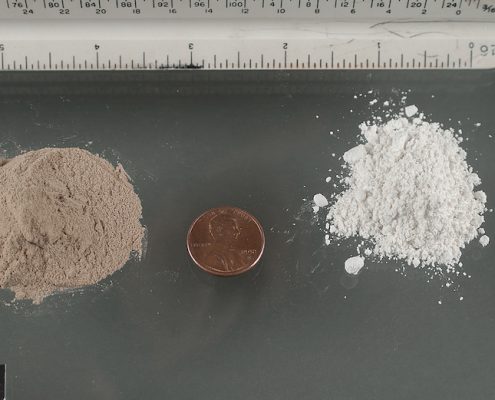
Heroin (r) south east asian (L) south west asian
He clasped his hands over his belly, stretched his gangly legs out in front of him, and he started talking, telling me about the first time he got high and about the last time he used, and he spoke about everything between. He told me about about the things he stole to support his habit and he told me about breaking into his own grandmother’s house to take a few of her most prized possessions, things he traded to his dealer in exchange for drugs.
Prostitution for Drugs
Jerome told me he performed oral sex on men out at the rest area beside the highway. They, the many, many nameless truckers and travelers, had given him ten dollars each time he entered one of the stalls to do the deed. He described the urine smell and how disgusted he was with himself when he felt the knees of his pants grow wet from contacting whatever was on the tile floor at the time. But whatever it took to get the next high was what he’d do.
Once, a man asked him for anal sex. He was desperate, so he agreed. Jerome said he was to earn twenty-dollars for enduring that painful and humiliating experience, all the while knowing the people in nearby stalls could hear what was going on. He said he’d read the graffiti on the wall above the toilet as a means to take his mind off the obese man behind him. When it was over the man pulled up his pants and left Jerome in the stall, crying. The man didn’t pay.
Jerome told me that he wasn’t gay—despised having sex with men is what he said, but he did it for the high, even though he often vomited afterward when recalling what he’d done. But the drug was more important. It was THE most important thing in his life.
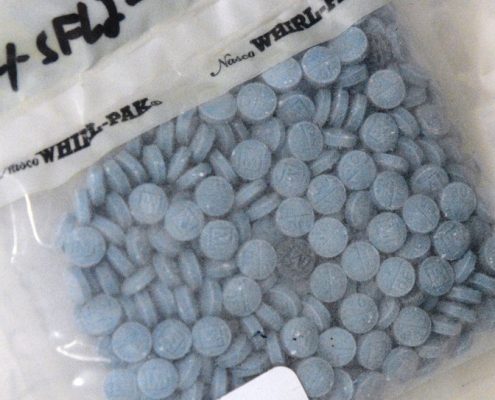
Heroin Fentanyl pills
$1,000 per day habit
My high-school buddy’s habit cost him a thousand-dollars each day, seven days a week, unless he wasn’t able to produce the funds. Then he’d grow sick with the sickest feeling on earth. The hurt was deep, way down to his very core. Even his bones hurt. He’d sweat and he’d vomit … and vomit and vomit and vomit until the pain in his gut felt like someone inside was using a hundred power drills and another hundred jackhammers to assault his brain and lungs and emotions. His heart would slam against his chest wall like a sledgehammer pounding railroad stakes into hard-packed Georgia clay.
Then he’d drop to his knees in another restroom, or steal another something that would help make it all go away until the next time. And he’d do it over and over and over again.
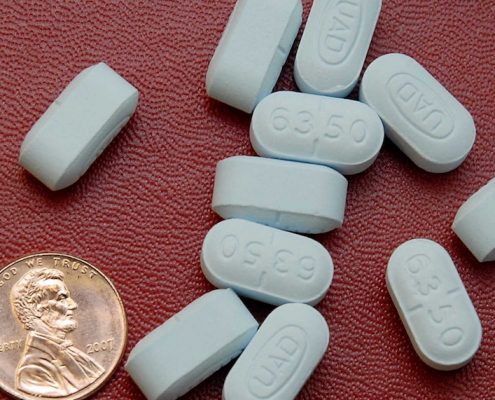
Hydrocodone
Jerome was lucky. He was caught by a deputy sheriff who was passing by a house and saw Jerome climbing out—feet first—from a bedroom window.
He was awaiting arraignment the day I saw him sitting on the bench outside the courtroom door. A dozen or so other jail inmates occupied the nearby seats.
Jerome asked if I would call his grandmother to tell her he said he was sorry for all he’d done, and that he was starting to feel better and was ready to seek help as soon as he was back on the outside. I told him I’d tell her. Actually, I went one step further and stopped by her house to tell her in person.
Now, I said Jerome was lucky, and I say this because going to jail prevented him from using the drug he grown to so desperately depend upon. His body ached for it, yes, but he beat the sickness and lived.
Unfortunately, many have died because of that same ache.
Federal Sentencing Table
How much prison time (for various crimes) could someone receive in federal court? Here’s the breakdown.
Click here.
Drugs Are the Root of All Evil
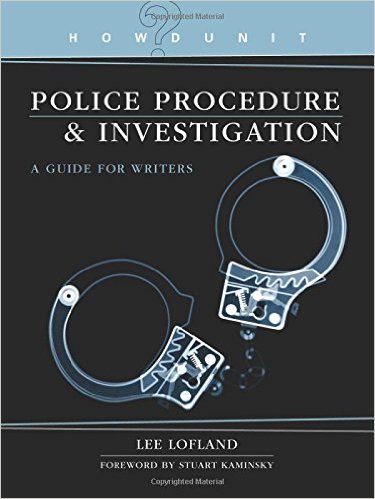
Police Procedure and Investigation
Drugs, Not Money, Are the Root of All Evil – Chapter 11 of Police Procedure and Investigation
Oregon to reduce felony drug crimes to misdemeanors
The state of Oregon recently passed a bill to reduce some drug crimes from felonies to misdemeanors—possession of small, usable (typically not enough to sell) quantities of methadone, oxycodone, heroin, MDMA, cocaine, and methamphetamine. An offender is allowed two arrests before prosecutors may up the ante and charge the suspect with a felony. Officials say the law will help addicts, and that it will help reduce the number of minorities incarcerated in jails and prisons. They say the current laws unfairly target people of color.
The bold move is also a means, officials say, to help prevent offenders/users/addicts from falling into the lifelong situation of being unable to secure decent housing, good jobs, vote (in some areas), and even an education (student loans are denied because of some drug convictions).
 For those people, there is absolutely no light at the end of a lifelong tunnel. No second chances, no matter what. Many grow weary of always living at the bottom rung of the ladder without a support system of any type, working menial jobs, if they can get a job, that is, and living in crappy apartments because a background check prevented them from renting in a nicer, drug-dealer-free neighborhood. So they re-offend and back to prison they go.
For those people, there is absolutely no light at the end of a lifelong tunnel. No second chances, no matter what. Many grow weary of always living at the bottom rung of the ladder without a support system of any type, working menial jobs, if they can get a job, that is, and living in crappy apartments because a background check prevented them from renting in a nicer, drug-dealer-free neighborhood. So they re-offend and back to prison they go.
Keep in mind, state law does not supersede federal law, which still squarely places the above list of illegal drugs in the felony category. Therefore, arrested for small quantities of drugs by local Oregon police = misdemeanor. Arrested by the feds, in the same location, for possession of the same quantity (any amount) = felony. However, it’s highly unlikely the FBI, ATF, or DEA are planning to kick in Daryl Dope’s front door over $12 worth of cocaine. But they could.
Drug Schedules
Schedule I
Schedule I drugs, substances, or chemicals are defined as drugs with no currently accepted medical use and a high potential for abuse. Some examples of Schedule I drugs are:
heroin, lysergic acid diethylamide (LSD), marijuana (cannabis), 3,4-methylenedioxymethamphetamine (ecstasy), methaqualone, and peyote
Schedule II
Schedule II drugs, substances, or chemicals are defined as drugs with a high potential for abuse, with use potentially leading to severe psychological or physical dependence. These drugs are also considered dangerous. Some examples of Schedule II drugs are:
Combination products with less than 15 milligrams of hydrocodone per dosage unit (Vicodin), cocaine, methamphetamine, methadone, hydromorphone (Dilaudid), meperidine (Demerol), oxycodone (OxyContin), fentanyl, Dexedrine, Adderall, and Ritalin
Schedule III
Schedule III drugs, substances, or chemicals are defined as drugs with a moderate to low potential for physical and psychological dependence. Schedule III drugs abuse potential is less than Schedule I and Schedule II drugs but more than Schedule IV. Some examples of Schedule III drugs are:
Products containing less than 90 milligrams of codeine per dosage unit (Tylenol with codeine), ketamine, anabolic steroids, testosterone
Schedule IV
Schedule IV drugs, substances, or chemicals are defined as drugs with a low potential for abuse and low risk of dependence. Some examples of Schedule IV drugs are:
Xanax, Soma, Darvon, Darvocet, Valium, Ativan, Talwin, Ambien, Tramadol
Schedule V
Schedule V drugs, substances, or chemicals are defined as drugs with lower potential for abuse than Schedule IV and consist of preparations containing limited quantities of certain narcotics. Schedule V drugs are generally used for antidiarrheal, antitussive, and analgesic purposes. Some examples of Schedule V drugs are: cough preparations with less than 200 milligrams of codeine or per 100 milliliters (Robitussin AC), Lomotil, Motofen, Lyrica, Parepectolin.
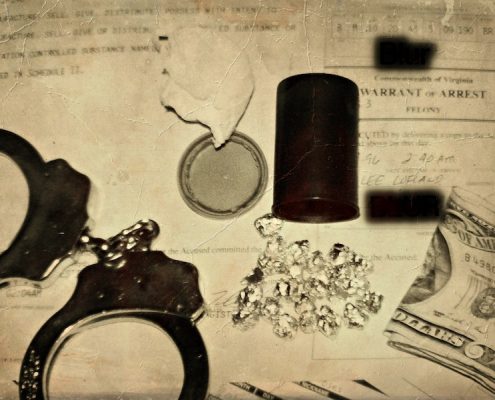
Felony arrest warrant served/executed by me after a stop and frisk led to guns, drugs, and cash.
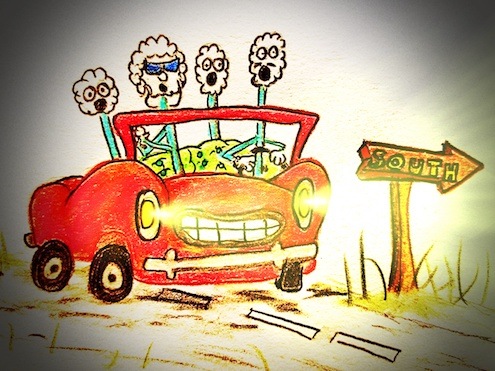


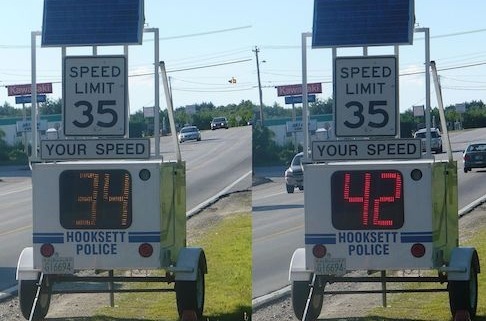
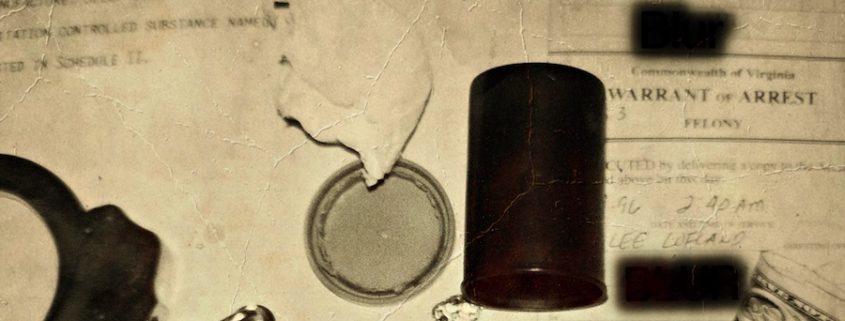




 For those people, there is absolutely no light at the end of a lifelong tunnel. No second chances, no matter what. Many grow weary of always living at the bottom rung of the ladder without a support system of any type, working menial jobs, if they can get a job, that is, and living in crappy apartments because a background check prevented them from renting in a nicer, drug-dealer-free neighborhood. So they re-offend and back to prison they go.
For those people, there is absolutely no light at the end of a lifelong tunnel. No second chances, no matter what. Many grow weary of always living at the bottom rung of the ladder without a support system of any type, working menial jobs, if they can get a job, that is, and living in crappy apartments because a background check prevented them from renting in a nicer, drug-dealer-free neighborhood. So they re-offend and back to prison they go.
